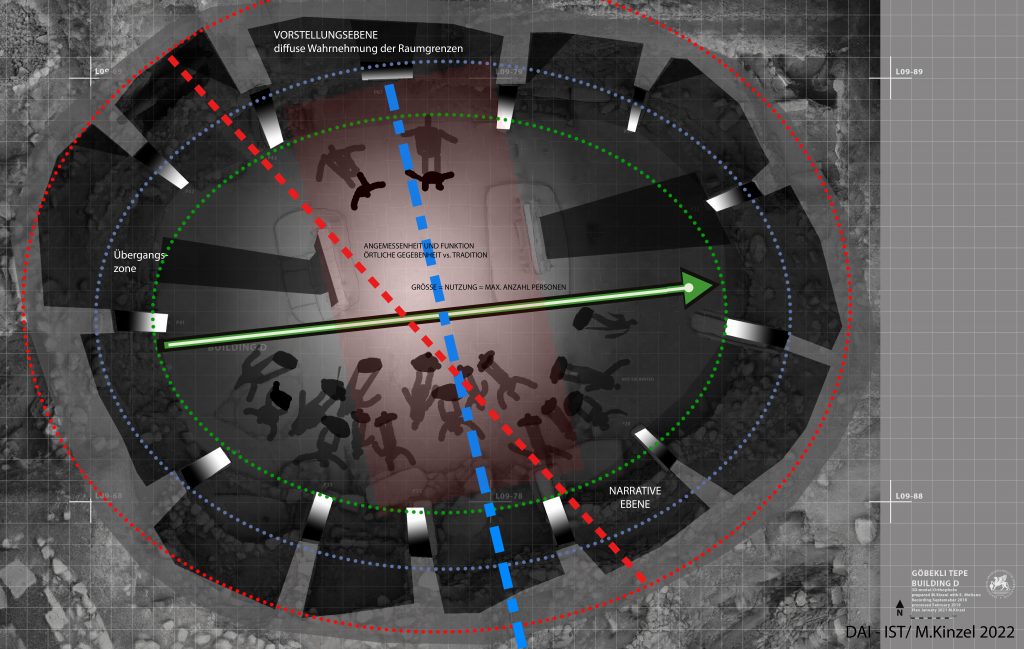The third roundtable meeting of Cluster 7 Shaping Space – Shaping Society took place on March 24th and 25th, 2022. Representatives of various disciplines from different departments of the DAI and universities discussed the role of “dimension” in different building cultures. Following on from last year’s meetings, aspects of the prehistoric buildings of the Near Eastern Neolithic, the Pharaonic buildings of Egypt, Roman architecture, the early Islamic architecture of Spain, buildings by Mohamed Ali in 19th century Egypt, and the dimensioning of special buildings in Japan, which contradict the actual theory of proportion, were compared and questioned across cultures. Examples from the present, e.g. Vladimir Putin’s use of the Kremlin or Egypt’s constructed planned capital, underlined the topicality of the subject.
Graphic: DAI-IST, M. Kinzel
It became apparent how differently societies understand the role of “dimension” in building: as a superlative of what is structurally possible, as a functional necessity, as an expression of a specific aesthetic, as a carrier of meaning or a means of remembrance. Leaps of dimension are not only evident in the monumentalisation of archetypes, but also, for example, in the expansiveness or complexity of building structures, the multiplication of spatial options, and the variance of building elements or constructive ventures. Each culture sets different priorities and develops its innovation potential in different areas.
Basically, we try to identify the architectural understanding of a building culture and the social and ruling system implied or actually existing with it. How relates the built structures to what have been described or perceived by contemporaries? What role does the dimension play in this?
The results of the workshop meetings dealing with “dimension” are to be presented in an anthology in the near future.
Felix Arnold, DAI Madrid
Moritz Kinzel, DAI Istanbul

